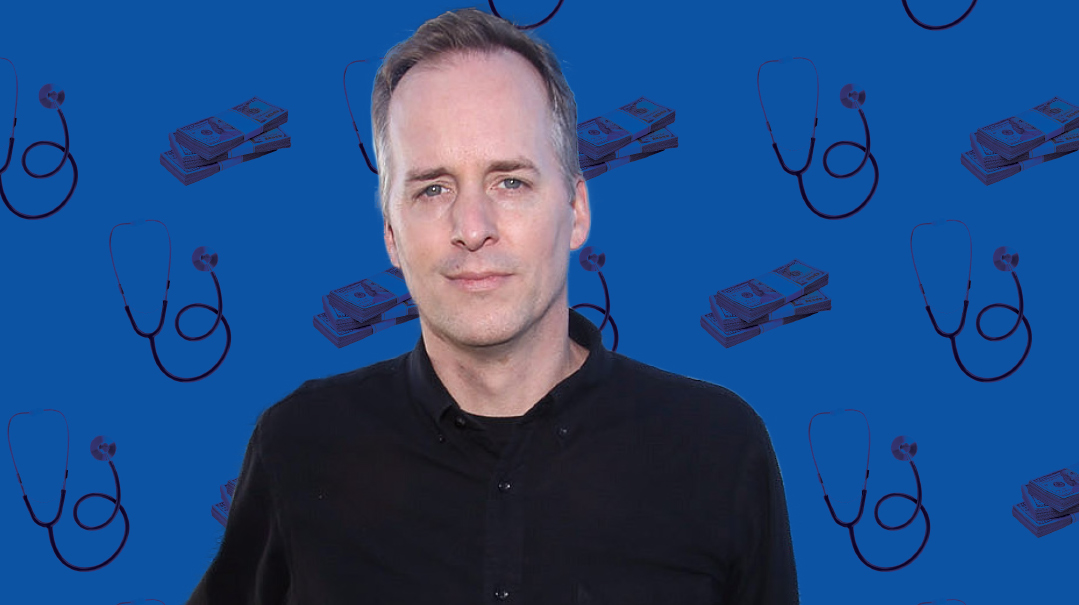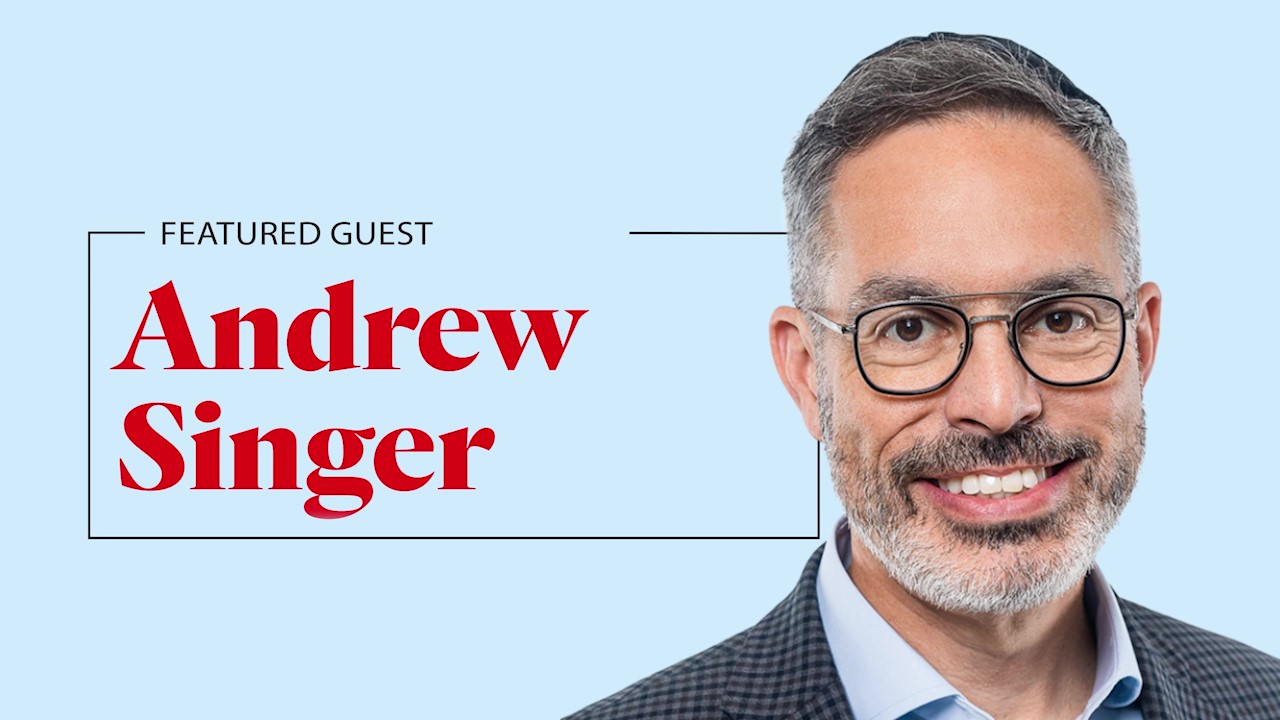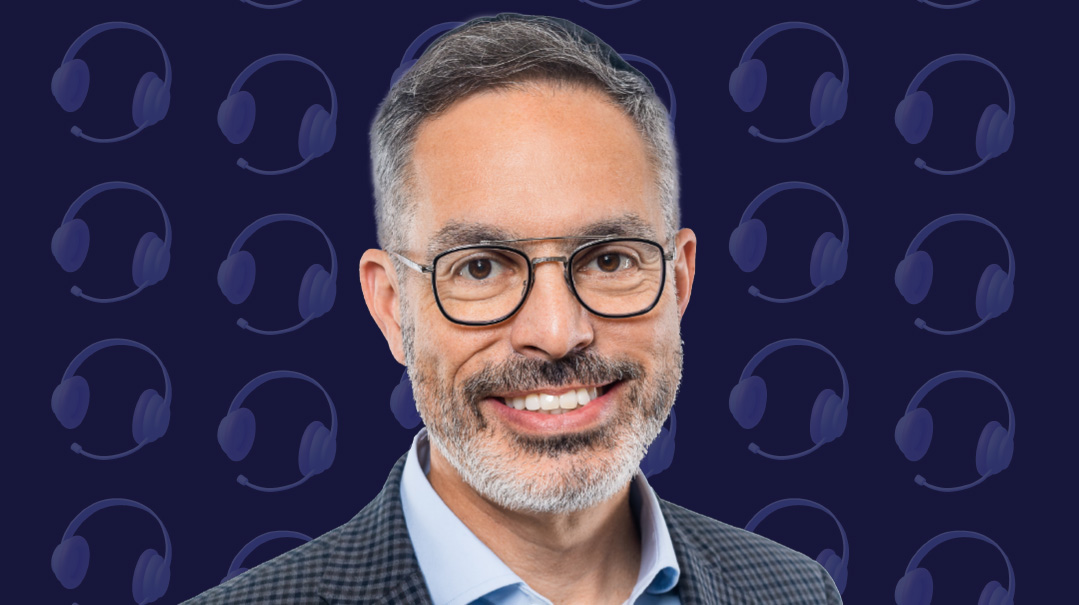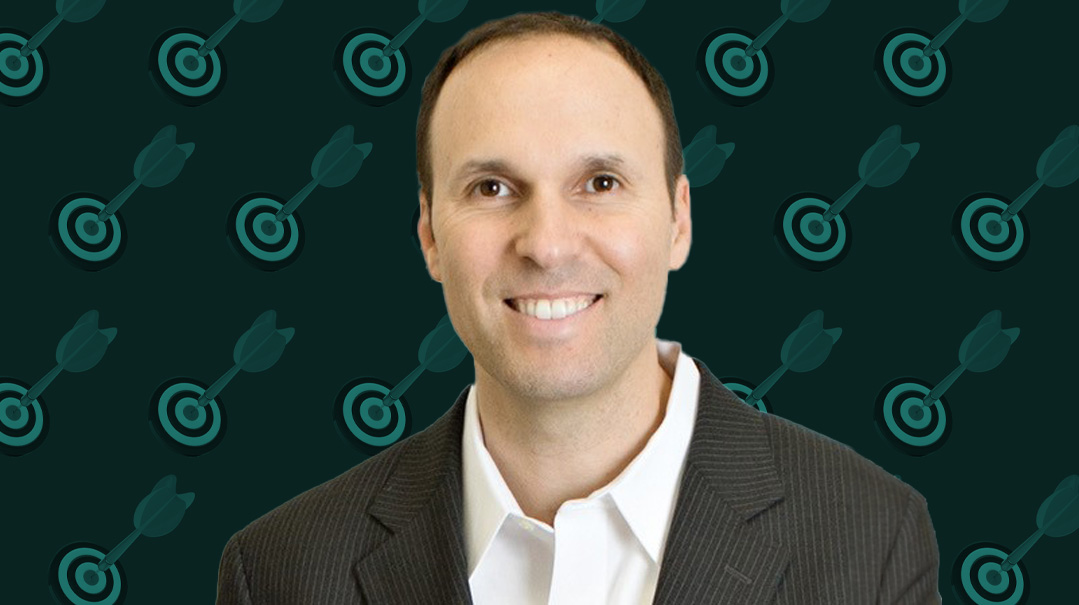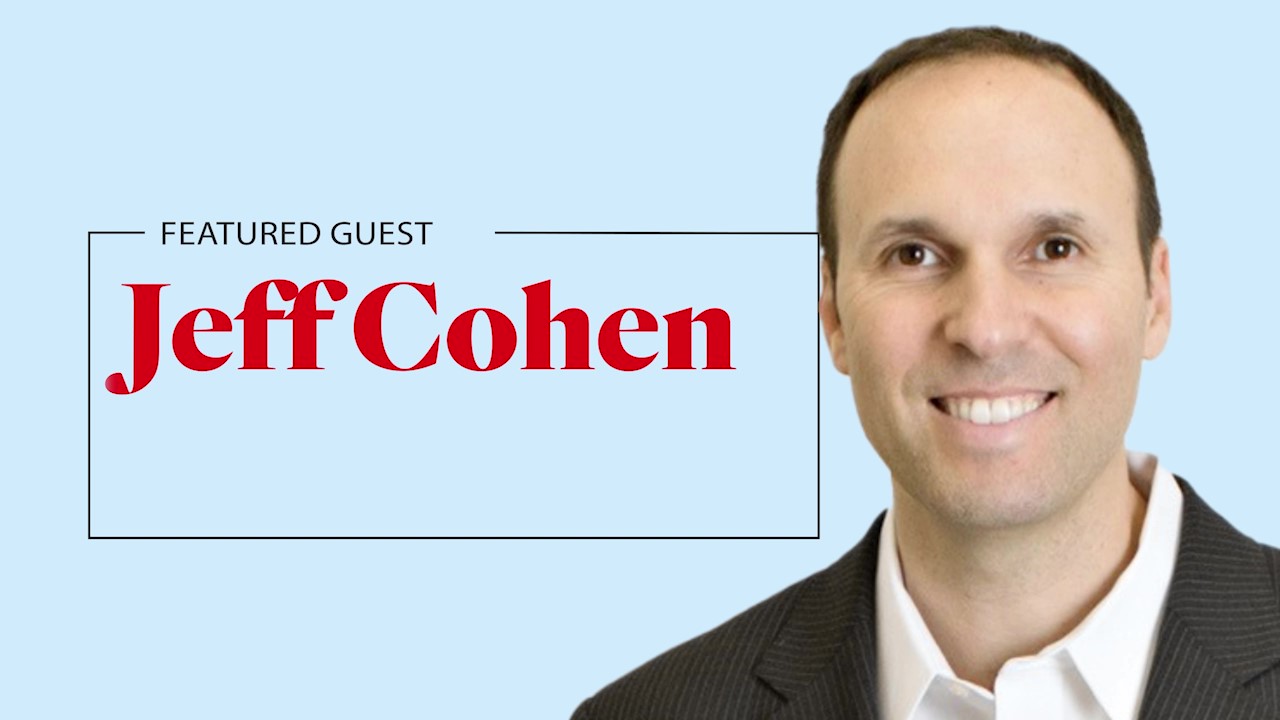Penny Saved, Penny Earned with Yitzchak Goldsmith
| June 27, 2023Put your money to work now so you can take it easy later
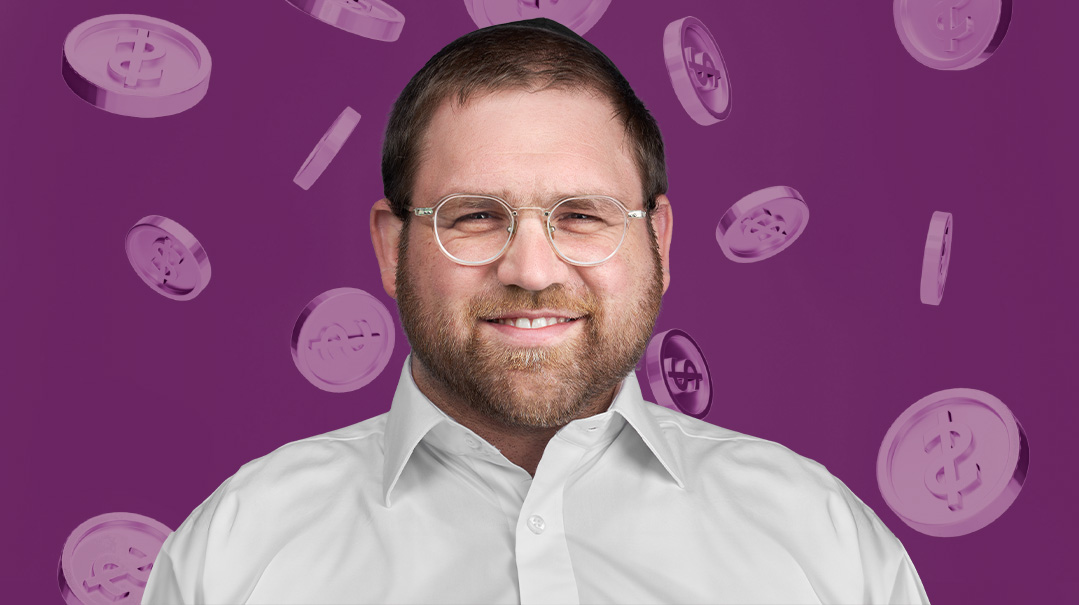
Exclusive bytes from the Kosher Money podcast
Yitzchak Goldsmith is a Certified Financial Planner (the gold-standard designation for financial advisors) with a degree and background in accounting. He quickly dispels the misconception that financial planners only deal with hard, dry numbers. “Financial planning is about ethics, business, psychology — and finances,” he explains.
Yitzchak is also a Charter Life Underwriter (CLU), a certification awarded to people who specialize in life insurance and annuities. He uses his wide-ranging knowledge to guide his clients — from kollel families to multimillionaires — to plan wisely for their future needs, whether college tuitions, emergency funds, weddings, or retirement.
Yitzchak grew up in a family that valued saving wisely. He remembers his grandfather skimming the newspaper for stocks to see where he could invest next. When his grandfather sold his business, he invested in the stock market and put aside money for each of his grandchildren. That pot grew into a sizeable chunk, which many of the grandchildren used to purchase their first homes.
Yitzchak’s other grandfather didn’t give standard birthday gifts; instead, he would give each grandchild $25 in bonds each year, which they didn’t even know about. When they married, they would receive the gift of an investment that had been working on their behalf all those years. “It was what first gave me the idea of choosing long-term gains over short-term pleasure,” Yitzchak shares.
Not one to rest on his laurels, Yitzchak recently became a RICP (Retirement Income Certified Professional), which is a relatively new certification financial advisors can earn, which prepares them to guide people facing retirement. He explains what has changed in the retirement model we’ve been used to.
“Until now, people saved some toward retirement, but mainly relied on their pensions from work and social security. Now, not only did we switch to a 401(k) model, which moves the responsibility from the employer to the individuals, people are also living longer. Social Security starts at around 65 because that was once the expected lifespan. Today, baruch Hashem, people can live for another 20 to 30 years after that, which means they need to plan for retirement very differently.”
Yitzchak’s ABCs for wealth
ASSET PROTECTION
When you build a house, you first put down a stable foundation. Only then do you build on top of it and start to enjoy the home.
Financial planning is the same. You first need solid asset protection so nothing collapses and causes you to lose everything. That includes an emergency fund, life insurance, home/auto/umbrella insurance, health insurance, a will, and (for some) an estate plan. Once someone is in their 50s they should look into Long Term Care insurance.
BUILD WEALTH
Put away money in stocks, bonds, or real estate. This can be held in an individual brokerage account, a 401(k), IRA, 529 plan, or custodial account. Choose which product and account type is best for you, based on your age, time horizon for needing the money, and goals.
CREATE INCOME
In life, we trade our time and skills for money, which we then invest. But the goal is not to sleep on bars of gold. Eventually, we want to switch that money back into income, be self-supportive, and enjoy life. The strategies to accumulate wealth while you are working are very different from what is needed to distribute your income in retirement. But you can’t wait until retirement to start to figure this out. You should put strategies into place while you’re working that will allow you to maximize your income later. This is something that even professional money managers aren’t trained in. They just try to accumulate the biggest pile of money with no exit strategy.
How does retirement in the frum community play out differently than in the secular world?
We have Hashem and have bitachon that He will take care of us, and that whatever situation we are in is for the best. We want to leave room for Hashem to send us brachah in different ways. However, we still have to do our hishtadlus. Everyone should consult with their daas Torah as to what is considered proper hishtadlus and how much to cut out of their lives and save, and be worried about the future. In the secular world, people have lower expenses, so they can save more. They also eventually sell their house, downsize to a condo, and invest the profits of the sale to help them through retirement. In the frum world, we have higher expenses and even more importantly, a culture of helping our kids. Couples in their sixties are usually still supporting children, whether with monthly checks, helping with simchahs, or maintaining a large home so they can host everyone for Yom Tov.
I have people come to me in their mid-sixties with barely anything put away. Eventually, they’re going to run short, and instead of being able to help their kids, they’re going to become a burden on them.
Let’s address the million-dollar question: How much income do I need for retirement?
You need to figure out how much you need to live after taking out tuition, mortgage (if it will be paid off), private health insurance, and all fixed expenses related to your children. On the flip side, you also may initially travel more for vacation or visit children out of town or have more medical expenses.
Let’s say you calculate that you will need $100,000 annually once you’re retired. You still need to account for 3 percent annual inflation (and that figure is really much higher in the Jewish world). In 30 years, you’ll need closer to $240,000 to have the same purchasing power that $100,000 has today. That means you need a retirement plan that allows you to withdraw $240,000 a year.
Where does Social Security fit in?
Social Security payments today average between $25,000 to around $45,000 annually. It is based on salary, years worked, and when you start taking it. If your income was “off the books” or via parsonage, it can be very little or almost nothing. It’s usually not nearly enough — and it was never meant to be.
When the Social Security model was first created, the average lifespan was 63. By now it has risen to 77, but even that is only an average that accounts for premature deaths due to sickness, accidents, etc. Realistically, once a couple reaches 65 years old, there’s a 40 percent chance that at least one of them will live into their nineties. Social Security was never supposed to support people for that long. And the later years usually brings along higher health care costs, including aides.
Outside of making more money, how can someone build their retirement pot?
- If you have a 401(k) plan at work with an employer match, contribute up to the maximum match. The match is free money. Whether you should put in more than that will depend on your plan’s investment options and fees.
- Max out your individual IRAs, which today is $6,500 a year per person if under 50 and $7,500 if over 50. Some do it in a lump sum at the end of the year, yet many do it in monthly payments. If you invest on a consistent basis, something known as “dollar cost averaging,” you are in the market if the market goes up and get to buy more shares if the market goes down.
There are a few different types of IRAs. There are different rules for each regarding taxes, access to the money, and income limits. They need to be looked at yearly to see which type makes sense for that year. You can have multiple IRAs.
While the ultimate goal is obviously to have money to retire with, in the frum world, most of our big-ticket expenses come into play from age 40 to 60. That’s when we make weddings, send kids to seminary and yeshivah, etc. If you put too much away in locked-up long-term savings, you won’t be able to pay for those life events. But if you don’t put away enough, you’ll never be able to retire.
That’s one advantage of a Roth IRA, which allows you to take out the principal that you contributed at any time without penalty or taxes. You just won’t be able to put it back in.
Do you think people need an investment advisor, or can they handle things themselves?
If you have some time to do a little research and just want a simple broad-based index fund, you can go to Vanguard or Schwab and do it yourself. They have very good support on opening accounts. They just can’t give tax or investment advice. You just have to understand your risk tolerance. At the beginning with small balances, losses won’t necessarily scare you and tax implications are minimal.
If you have a lot of money, hiring a financial advisor may be the way to go. Studies show that people who invest without an advisor earn a lot less. Most of that comes down to reacting due to fear. When you’re doing it yourself and see the market collapsing, it’s hard not to press the sell button. It’s scary to lose the equivalent of an entire year’s salary in a short period of time.
When someone else is running the portfolio for you, it’s easier for them to push you to stay the course. It helps to know that the market has patterns. It’s pretty much a given that at some point every one to four years, you’ll lose 10 to 20 percent of your money. Historically, the market eventually goes back up again. Sometimes the hardest part is just riding the ups and downs without pulling out.
A financial advisor can also advise you on tax strategy, saving you more money than the fee you pay him to manage the account. He can guide you on how to own your investments — (i.e. in an IRA, under your children’s names, in a trust etc.).
Trading individual stocks is a whole different conversation. I’ve met very few people who actually made good money doing that.
Of course, people make mistakes when they invest in something too risky, but I’ve seen it the other way, too. If you’re too conservative and keep all your money in the bank or in low-yielding products like CDs or a whole life insurance policy, you lose money to inflation and the potential growth you could have had.
Bottom line: An objective professional can offer you invaluable guidance.
Any tips for straddling the balance between saving for life-cycle expenses like marrying off children and the long-term goal of retirement?
That’s the big question. From dating until the last sheva brachos and setting up the house, each child will cost you a minimum of $50,000, and that’s before any commitment to support post wedding. If you multiply that by six to eight kids, realistically most people will not save enough to even cover that. A financial advisor is not a magician. We can’t make up numbers that aren’t there.
But don’t be discouraged from trying at all. Even if you don’t have enough for the full chasunah, you’ll have enough to avoid that crushing pressure. You’ll have enough wiggle room to start paying the first bills while you work out the rest by borrowing from gemachs or tapping your line of credit on your house.
I also want to point out that there are people who will help you pay for a wedding. There isn’t anyone (besides tzedakah organizations) who will help you live in retirement. You can borrow for a wedding, a one-time expense, and pay it back as you continue working. You can’t borrow indefinitely for every year after you turn 65.
My recommendation is to focus on saving for the big-ticket items, but not to completely neglect the money you’ll need for those 30 years of retirement. I recommend that once people get past the hurdle of a down payment on a house, they switch focus to their retirement. Even a small amount that compounds over time can yield big results.
If someone’s ready to invest, where should they put their money?
It boils down to risk tolerance and time horizon.
I used to argue with people and try to convince them to go one way or another based on the data, but you can’t fight someone’s nature. Psychology plays a huge role in how people invest. You have some people who’ll see their account drop 20 percent and they have a panic attack.
Tolerance can change over time. For example, as your assets grow, a 10 percent loss means a big dollar amount. Or if your income situation changes, you may need to rely on those assets more.
Time horizon is also important: Money that is needed within the next three years (i.e., down payment money) should not be in stocks. Also, as you get closer to your long-term goals, you should dial down the risk.
As far as how to allocate investments, let’s examine what the different options involve. Stocks have higher reward and risk. Bonds have lower reward and risk. Cash and CDs are even lower of each. You should have a mix of each. Individual risk tolerance and time horizon will help create the right formula for each person.
For long-term assets where you can stomach losses, most people can have 90 percent stocks and ten percent bonds. As you get older and closer to your goals, you should dial the mix up to bring in more bonds. There are target-date funds that will adjust this mix for you.
If you want to be more aggressive than the Target Date fund is but want the automatic shifting to bonds, you can pick a date that is later than when you really need it.
Being that retirement can last 30 years, you need to still be somewhat invested in stocks even in retirement. For most people, the stock/bond portion should be via an index fund so you are diversified. That is a broad representation of all the stocks in a given index (S&P 500, Nasdaq, Total Stock Market, etc.).
There is always risk. If there’s a downturn during your last couple years of working and there’s no time for the market to recover, it might push off your retirement because you can’t afford to start pulling out yet. A downturn right before you want to make a wedding would also be problematic. That’s why I always recommend having safe, low-yielding money that’s liquid. You’ll always have something to tap into while waiting for the market to recover.
You spoke about annuities on the podcast. Can you tell us a little more about how they work?
If someone doesn’t have enough money to draw an adequate income in retirement, there’s the option of an annuity. It’s the opposite of life insurance. You give an insurance company some money, and based on your age and the product you choose, the company pays you money every month for the rest of your life. The payment is guaranteed and is usually higher than what you can take from a portfolio without risking running out of money.
However, you have no access to the money. After a person dies, the insurance company keeps everything. You can’t leave any of that principal investment to your children. It’s tough because people want to leave a legacy. It’s even brought down that leaving a yerushah is good for the neshamah. Studies show that people that have a consistent guaranteed income in retirement are happier than people who may even get more money from their portfolio but have the worry about fluctuations and that it can stop at any time.
I don’t believe there’s a right or wrong product. For some people, this is the kind of investment they need. Investing is picking the right product for you.
Let’s crunch the numbers:
If you’re 20–40…
Just start investing. If you invest $1,000 a month, after 40 years you’ll have over $4 million in your account. Do it on autopilot before you have a chance to think about it, and the money will compound automatically.
If you’re over 50...
Cut back. There’s no magic other than discipline. Sharpen your pencil, outline a goal, then make a plan for getting there. Can you cut out vacations? Restaurants?
It almost takes a level of selfishness, especially in our world. We live in a culture where Bubby and Zeidy take the whole family on a Chol Hamoed trip and easily drop $1,000-plus in one day. That’s your pleasure in life; you put so much work into raising your kids and now you want to have nachas from them….
But you need to ask yourself if you can afford it. If you want to retire, it might be time to stop spending on others and put money away for yourself instead. You may have to stop helping your kids when they make a simchah. Your kids might not be happy, but it’s necessary and doable.
You can also work for longer, which has a double benefit. It gives you more years of income and also delays taking Social Security, which means your later payouts will be higher. There’s really no reason someone needs to stop working at 65. Most people are still sharp until their eighties and depending on their job, can easily work into their seventies.
How would you sum up retirement financial goals?
The goal with retirement is to save enough that you can comfortably live off your assets without worrying about running out of money.
Analysts went through the last 100 years in the market and analyzed every possible scenario using what’s known as a Monte Carlo simulator. The results: If you rely solely on your stock/bond portfolio for income, in order to have a 98 percent success rate of not running out of money, you cannot take out more than 3 percent of your portfolio per year! (Even though the market averages 10 percent a year, the down years in the market have a negative effect.)
So even if you have a $1 million portfolio, you should not take more than $30k per year. So if you need $100k annually (in today’s dollars), you will need to have saved a few million dollars for retirement.
This rule is if you want to be on the safe side. Obviously, you can take out more than 3 percent and see how things go, especially if you have people to fall back on if you do run low on funds. You may still end up with lots of money in the end, if the market works in your favor. There are also people who become eligible for Medicaid.
There are other strategies like using a portion of your assets to buy an annuity, which has a higher guaranteed payout, though as previously mentioned, you lose the principal. You can also do a reverse mortgage to take equity out of your house. In such an arrangement, the bank gives you money and you make no payments until the house is sold.
There are also other strategies (beyond the scope of this article,) that may allow you to take higher distribution rates without taking on more risk. So even with a smaller balance, you can hit your goals.
Of course, you don’t want to save so much that you wind up living a cheap life, then dying with all the money still in the bank when you no longer need it. Yet you only have one shot at retirement. Once you start pulling out, that’s it, so you want to have the highest success rate possible.
Eighty-five percent of small businesses fail, but people still start one because they think they’re going to be in the 15 percent. Similarly, everyone thinks they can stomach the risk and losses of the stock market — until they can’t.
Any action is better than no action. You have to approach your financial future with a plan, not just a wish and a hope.
People always want to know how the other guy is making ends meet. And let me tell you — everyone has a story. There’s the guy who was in an accident as a child and has significant funds from the lawsuit. Someone else has an inheritance from an uncle. Another got an unexpected tax refund. The next person just has financial discipline. Good old-fashioned mazel on some investment. Unfortunately, some are being supported by tzedakah and some are in debt.
More money doesn’t always mean more income to your pocket. Sometimes people save significantly, but it’s either all taxable or non-liquid. Part of planning is to make sure the money is in the best place possible and to ensure you’ll have access to it when you need it.
(Originally featured in Mishpacha, Issue 967)
Oops! We could not locate your form.

